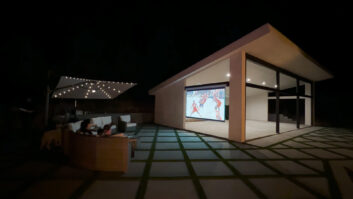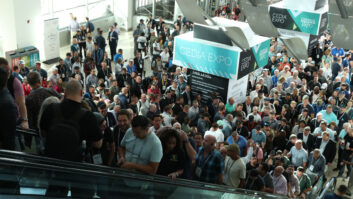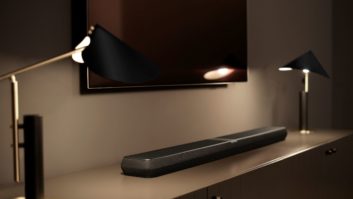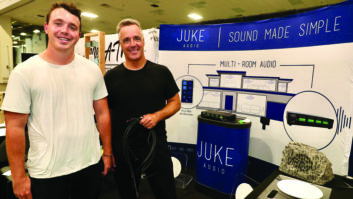Last summers blackout events focused attention on the state of electrical power in our country. While the national electrical grid and local providers have come under considerable scrutiny of late, the power that they provide at the utility pole level is, contrary to popular belief, very clean. The problems that affect audio/video system performance (RF/EMI noise, ground loops, and soft current) all begin between the utility pole transformer and the outlets in your home.
The providers in most neighborhoods today feed a manageable group of houses from a 100-kilowatt or larger transformer, which, if you were able to tap directly into, would provide you with laboratory-grade clean power. So this begs the question: what happens to the power from there?
In an ideal world, the electrical service to your house would be connected just a few feet away from the utility transformer hanging from that large pole outside your home (affectionately called a “Pole Pig”) and the total wire length to your breaker panel would be less than 70 feet. The result would be reduced resistance and ideal signal flow. In addition, your service wiring would be designed to handle a 400-amp incoming service and your breaker box would be mounted just on the other side of the wall to your A/V system. By having the breaker box this close you would have a more efficient delivery of current to your equipment and less wire length, hence lower resistance. Finally, your house would be wired with a minimum of 10-AWG wire throughout.
Unfortunately, the majority of us live in the real world of electrical power. In this real world, the service ranges from an average of 120 amps in older homes to 200 amps if you or your electrician were able to make a strong case that you were indeed going to operate an electric printing press in the basement. A far cry from the ideal 400-amp service, this deficit robs your system of the current it needs to perform at its peak, requiring everything in your home to work harder. Think of it like exercise; youre body doesnt work as hard running on a flat surface as it does uphill because of the resistance involved. The steeper the hill the harder your body has to work to provide you with enough oxygen to keep you going up that hill.
Moreover, the transformer is rarely outside your door. In fact, the service feed is usually several hundred feet long before it goes to the long metal pipe (known as the “stalk”) on the side of the house that runs to your meter. On some of todays larger two- or three-story homes this stalk can average 30 feet or more. Worse, depending on when your house was built, this wiring may be aluminum, a particularly poor and inexpensive conductor of electricity that has a tendency to get very warm. Poor conductivity increases resistance, which decreases signal strength, which again results in weaker power and performance from your system.
A typical setup in any home across America would look like this: The meter on the side of your house is connected to the electrical panel (breaker box) on the inside of your house. The circuit breakers in your panel may be connected to a copper bus bar, but more likely it is aluminum and it has oxidized from years of humidity, moisture and neglect. After the breaker box, the 14-AWG wire (12-AWG if youre lucky) is run to the first wall outlet being fed and then “backstabbed” into the outlet. Backstabbing is a timesaving installation where wires are simply pushed into the outlet and held in place by a clamp. From the first outlet, the wire is also backstabbed and then brought to the rest of the outlets in the same fashion. Your electrical installer, by way of shortened installation time, enjoys the only advantage of backstabbing an outlet.
The biggest disadvantage to this method is that the wires are held in place primarily by a blade of bronze. After a few good jolts of high-current usage, these blades of bronze begin to heat up and relax, not only losing their connecting ability but creating heat, which deprives your equipment of energy.
The result of these real-world disadvantages is considerable loss and AC line noise from the providers pole pig on the street to your equipment. This current loss and noise greatly reduces your systems ability to accurately recreate the dynamics of sound and video. In addition to having a licensed electrician inspect your clients house and possibly increasing their service, a high-quality power line conditioner (PLC) can be of immeasurable assistance.
Over the past decade myriad PLCs have been introduced into the market. Some are small outlet strips that look eerily similar to the strips you see next to the light bulbs in the grocery store. Others are huge behemoths that look more like a mega-buck, mono-block audiophile amplifiers than a device that “conditions power.” They vary in price from $99.99 to $9,999 and most, but not all, work as claimed. With all of the options available, what are the differences?
Traditional methods of line conditioning, from inexpensive power strips at hardware stores, to audiophile-grade conditioners at high-end retailers, quite effectively filter noise and suppress momentary voltage spikes. These units are wired in series, meaning that the electricity must travel through the entire device encountering resistance in the form of filters, small air-core transformers, MOVs (metal oxide varistors) and hundreds of feet of copper wire before it reaches its final destination-your equipment. These traditional PLCs usually utilize these filters and small ai
r-core transformers to remove AC-borne noise.
Sine wave regenerators are another approach in conditioning and removing line noise. While the technology is not new, (it was actually developed by the Navy in WWII), it too is wired in series like traditional PLCs. Sine wave regenerators work by converting AC power to DC to clean or “regenerate” the sine wave and then convert back to “balanced” AC. Admittedly, the one drawback to this technology is that it can potentially consume as much as or more energy than it create. It is very important to use a product that is rated for loads greater than the total consumption of your system. If, for example, your power amp is rated for 250 peak watts (I say “peak watts” because most power amps are never consistently driven to their full rated potential no matter what the manufacturer says), and your sine wave regenerator is only rated up to 100-watts, it may shut down during a loud event such as an explosion when the amp is required to generate more than 100-watts to recreate that event.
Yet another approach to conditioning is a voltage regulator. Voltage regulators, through several methods, allow you to adjust the output voltage to a certain degree regardless of the input voltage. Most, but not all, of todays equipment is designed with a switch-mode power supply. As such, most equipment is engineered to operate at voltages that are up to eight percent higher, or lower than 120 volts. If your service is beyond this range (this can easily be checked by using a standard voltage meter) you should contact your provider immediately. If you have voltage-sensitive equipment, like vacuum tube amplifiers, a professional-grade voltage regulator might be for you.
Parallel chokes are a new take on an established technology. Chokes, or inductors as they are sometimes called, when wired in parallel on the hot and neutral legs of the circuit, allow the AC signal to pass directly through the unit, without adding resistance, yet still “condition” the line. Due to the parallel nature of the technology, equipment such as amplifiers do not have to be directly plugged into the device to reap the benefits, but rather simply plugged into the adjacent outlet sharing the same circuit. Because they operate on magnetic principals, the large chokes are able to magnetically store energy every cycle, which can then be used to satisfy the power demands of A/V components. The result is equipment that runs cooler and more efficiently because it does not have to work so hard to overcome the lapse in power. These chokes also serve a dual purpose in that they are able to effectively suppress voltage spikes and provide complete surge protection.
Richard Gray is co-partner and the inventor of Richard Grays Power Company products in New Orleans, Louisiana (www.richardgrayspowercompany.com).







